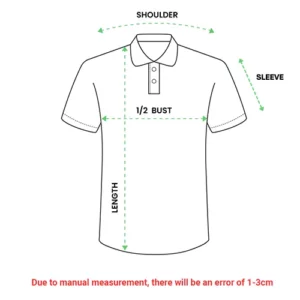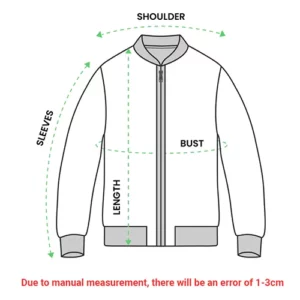Sigurd and Siegfried are two of the most famous dragon slayers and heroes in Norse and Germanic mythology. Both played central roles in famous epic poems – Sigurd in the Völsunga saga and Siegfried in the Nibelungenlied. However, there are still debates among scholars as to whether they refer to the same historical figure or represent different characters from separate traditions that were later conflated. In this article, I will analyze and compare the key similarities and differences between Sigurd and Siegfried based on the original texts to help shed some light on this long-standing question.
Similarities Between Sigurd and Siegfried
There are several noticeable similarities between Sigurd and Siegfried from the texts that point to them potentially being variants of the same original hero:
- Royal Birth – Both Sigurd and Siegfried were born as princes, though they came from different kingdoms.
- Name Meanings – The names “Sigurd” and “Siegfried” both contain elements meaning “victory” which refers to their heroic deeds and accomplishments.
- Fathers’ Names – Their fathers were both named Sigmund or Siegmund, versions of the same name.
- Sword Skills – Both heroes were extremely skilled swordsmen from a young age.
- Opposition to Saxons – They both fought against invading Saxon armies at some point in their careers.
- Dragon Slaying – The defining acts that made them famous was each single-handedly slaying a dragon and claiming its hoard of treasure.
- Cursed Treasure – Unfortunately, the treasures they obtained from the dragons were both plagued with curses that brought ruin in later days.
- Marriages to Burgundian Princesses – Sigurd married Gudrun and Siegfried married Kriemhild, both princesses from the royal line of Burgundy.
- Helping Their Brothers-in-Law – Both heroes aided their brothers-in-law in winning wives, Siegfried helping Gunther woo Brunhild and Sigurd helping Gunnar pass through the ring of fire to Brynhild.
- Death by Treachery – In the end, both met tragic fates after being betrayed by their wives due to conflicts arising from their marriages.
Differences Between Sigurd and Siegfried
While there are notable similarities, there are also significant differences between the two heroes’ stories, origins, and backgrounds:
- Source Texts – Sigurd’s story comes from the older Völsunga saga compiled in the 13th century while Siegfried features in the later epic Nibelungenlied from the 1200s.
- Family Origins – Sigurd was descended from dwarves, elves, and giants while Siegfried had fully human lineage. Sigurd was an orphan raised by the dwarf Regin after his father’s death while Siegfried was raised by his father Siegmund.
- Upbringings – Due to his supernatural ancestry, Sigurd had a more turbulent childhood undergoing intensive martial training. Siegfried enjoyed a carefree upbringing as a prince.
- Weapons – Sigurd inherited the magical sword Gram while Siegfried received the sword Balmung after helping dwarves divide an inheritance.
- Dragon Slaying Methods – The Völsunga saga provided more details of Sigurd’s cunning ambush of Fafnir in a pit. Siegfried’s dragon exploit received little attention.
- Gifts – Sigurd gained the abilities to understand birds from eating Fafnir’s heart. Siegfried gained impenetrable skin except for one weak spot from the dragon’s blood.
- Reaction to Dwarf – Sigurd recognized Regin’s treachery and killed him before taking the gold. Siegfried subdued the dwarf Alberich and took his cloak of invisibility.
- Attitudes to Brunhild/Brynhild – Sigurd knowingly accepted his fate in waking Brynhild. Siegfried was devoted only to Kriemhild and assisted Gunther dishonourably.
- Views on Earlier Wives – Sigurd planned to leave Gudrun for Brynhild. Siegfried remained faithfully committed to Kriemhild alone.
- Method of Betrayal – Sigurd was stabbed in his sleep by an assassin. Siegfried was speared from ambush at his one weak spot by Hagen.
- Role of the Gods – Odin actively intervened to assist Sigurd multiple times. The gods played no direct role in Siegfried’s story.
- Motivations for Revenge – Gudrun eventually forgave her family while Kriemhild vowed unending vengeance after Siegfried’s death.
How They Became Conflated
The reasons Sigurd and Siegfried became conflated over time include:
- The Thidrekssaga blended Germanic and Norse legends together anachronistically.
- Richard Wagner’s monumental opera cycle Der Ring des Nibelungen in the 1800s combined elements from both oral traditions into a new integrated narrative.
- The close parallelism of key story points like dragon slaying, marriage, and destruction made them seem like variants of the same archetypal hero myth.
Conclusion
In conclusion, while Sigurd and Siegfried share remarkable similarities as dragon slaying heroes who met tragic fates, there are also substantive differences in their origins, characterizations, and story details. The evidence suggests they were originally distinct figures from separate Norse and German traditions that became intertwined over centuries of oral transmission and literary adaptation. Ultimately, both offer complex, multilayered perspectives on the archetypal hero myth that has continued to fascinate audiences for a millennium.






